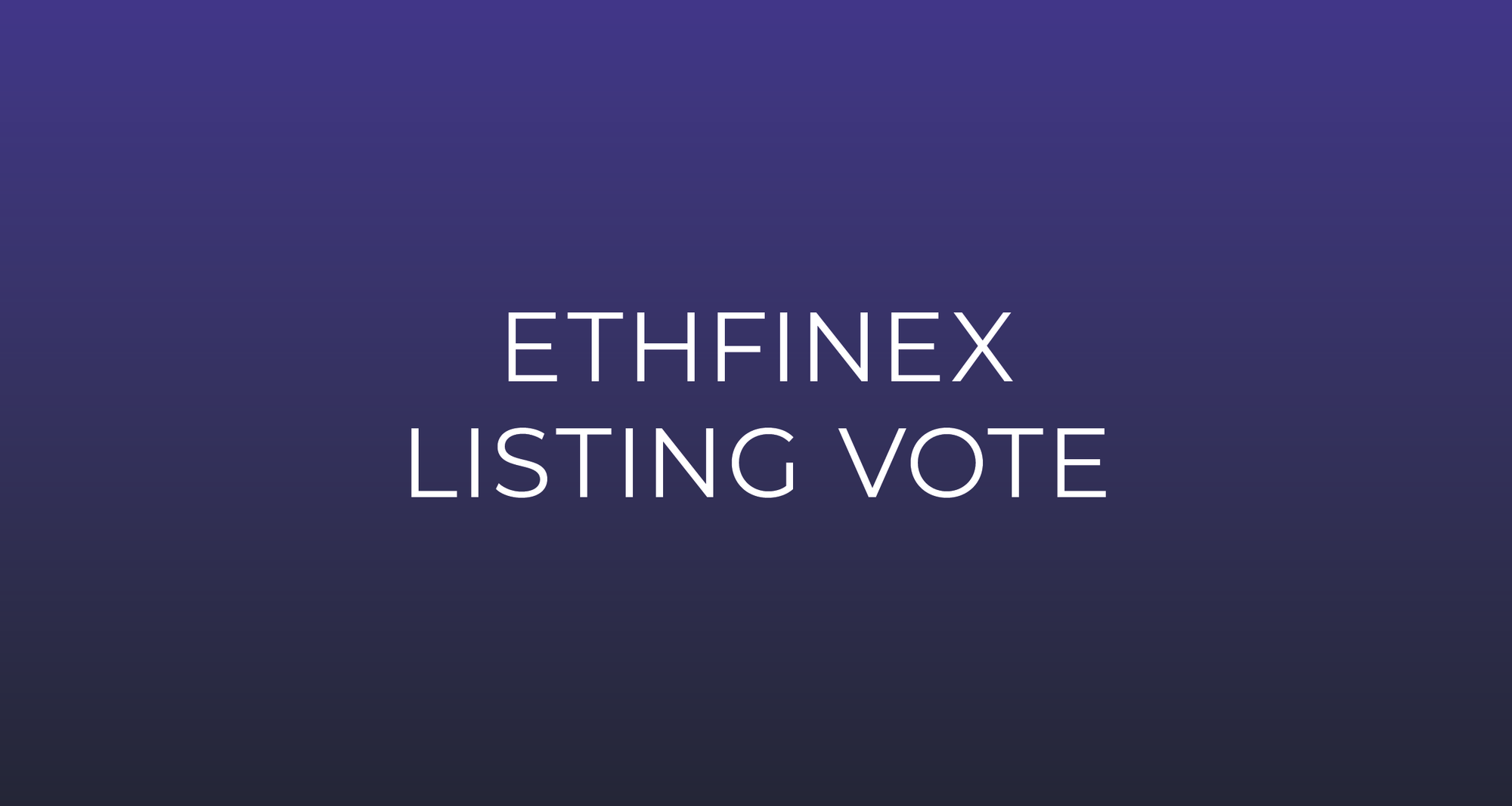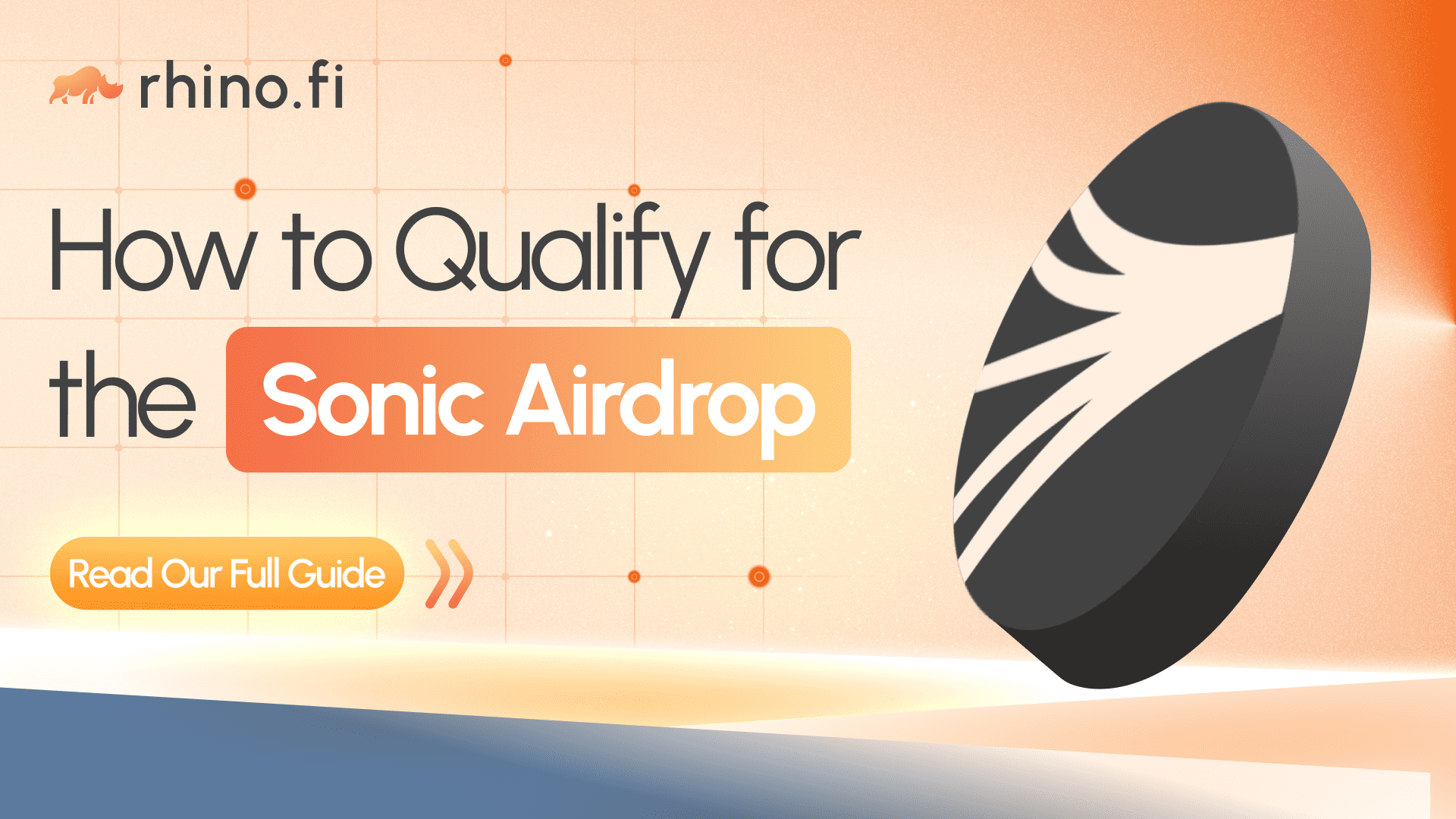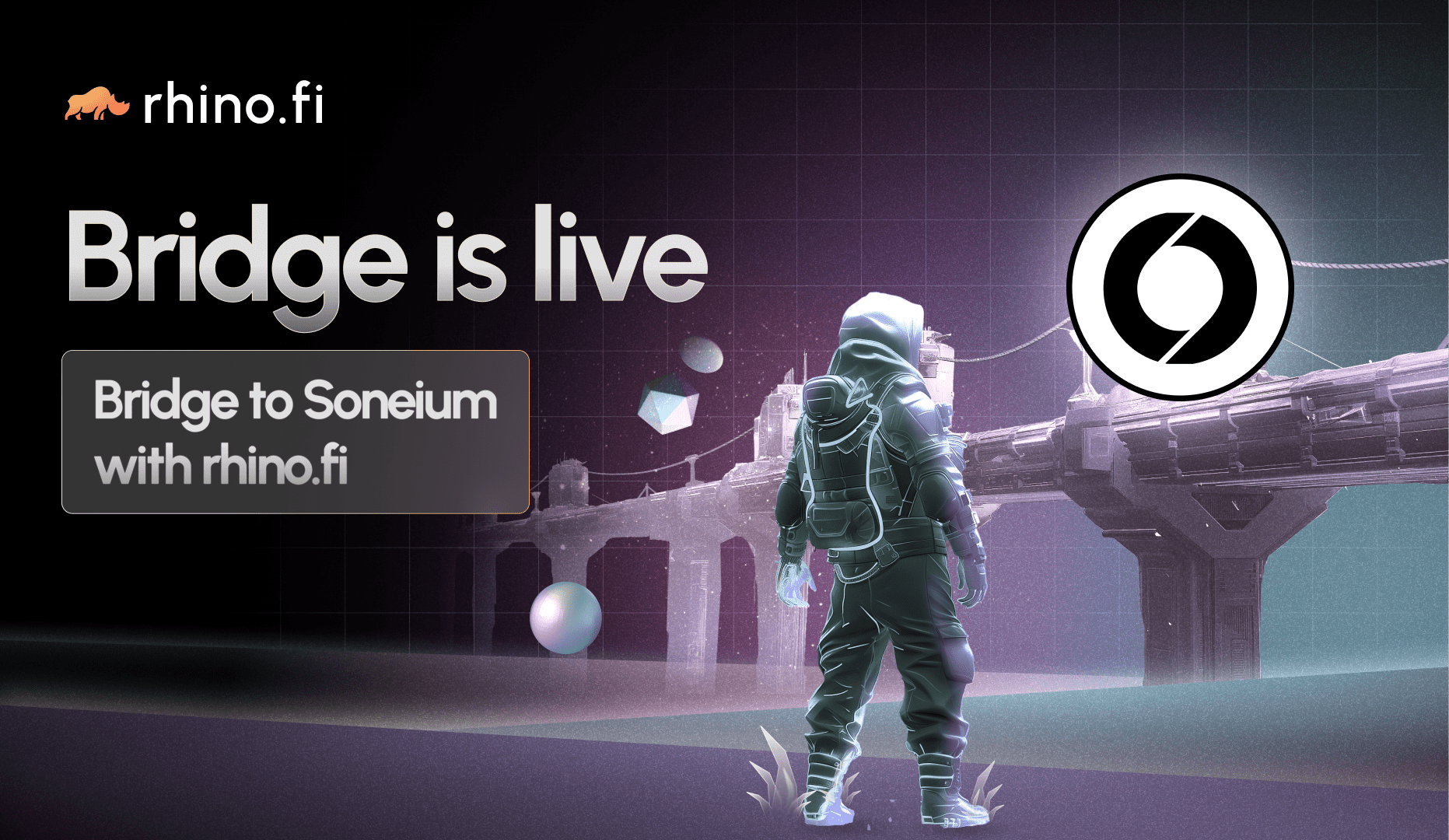Summary
From 15–29th May we ran the first ever community vote on Ethfinex.
The first vote centred around one of the most fundamental and frequent decisions which cryptocurrency exchanges currently have to make: which new tokens to list.
Despite being a common decision, it is one which disproportionately skews power in the blockchain ecosystem and is therefore an area where we feel power should be distributed to the community.
This article records the events and essential learning points which we will take forward as we design future governance mechanisms and work to generate more governance engagement for Ethfinex.
The Voting Mechanism
Community governance is one of the three key components of Ethfinex’s journey towards decentralisation, with the other two being:
- Open-sourcing as much as possible of our code-base (including front-end components).
- Moving to transaction settlement on-chain, removing the need for users to trust anyone else with custody of their funds, or go through slow deposit and withdrawal processes.
The vote took place using our open-source Ethereum based voting dApp, Nectar.Community.
Ethfinex Voting Tokens
The number of votes each member of the community has is determined by how many ‘Ethfinex Voting Tokens’ (EVT) they have in their wallet.EVT are generated using the clone functionality of Ethfinex Nectar tokens (NEC). This cloning process creates an entirely new ERC20 token, with the same balances as NEC, but several different properties. Traders earn Nectar tokens by providing liquidity to Ethfinex. As a result, the exchange’s largest customers hold the most NEC and receive the most EVT.
At the start of a vote, new voting tokens are created based on NEC balances at the time. This means that if you held 1000 NEC at the start of the vote you also receive 1000 voting tokens (EVT) in an instant ‘airdrop’ to the same Ethereum address.
EVT are spent when voting for one of the possible tokens up for selection, and any unused EVT at the end of the vote period (two weeks) expire and become worthless.
EVT Market
In addition, an EVT/USD market was offered on Ethfinex.
EVT can be considered as a temporary dissociation of NEC voting rights for the duration of a particular voting decision. These voting rights can, therefore, be sold and traded freely on the market, or simply delegated to someone else to vote with on your behalf.
This new market generated a huge amount of interest, and coupled with the fact the tokens expire at the end of the period, and the game theoretic desire of large voters not to show their hand too early, led to several interesting trading strategies and significant trading volume on several days.
Voting Smart Contracts
In addition to the EVT token, a token listing management set of smart contracts also keep track of the voting results and enforce the deadline at which point votes are frozen. When a new token listing vote begins, this manager also removes the old EVT token and creates a new one. You can view the smart contracts on Github.
Voting Results
The vote began slowly, with several smaller votes over the first week of the period.
The value of 1 EVT on the market began at just less than 1 cent (representing ~2.5% of the value of 1 NEC at the time).

The value and trading volume of EVT spiked once near the beginning up to 0.04 USD and again as the voting closed up to a peak of 0.05 USD; this represents ~12.5% of the current value of NEC (0.4 USD on 3rd June at 12:00 UTC).
The early leaders were @blockv_io , followed by @AuctusProject, @PolymathNetwork and @INTCHAIN. Most of the larger voters though began to show their hands only in the final three days of the period, causing the leaders to shift constantly and out-manoeuvre each other.
Overall 45,471,610 voting tokens were used, with the final results shown below. Unfortunately several of the runners-up, particularly Polymath and Auctus, had pending voting tokens which they were not able to use before smart contracts enforced the deadline.
Learning Points
Technical barriers
In advance of the process we were particularly worried about the potential technical barrier to voting, which required the use of a personal Ethereum wallet, for example via Metamask. While there were a few issues (relating usually to users who had set gas price too low and therefore were waiting a long time for confirmation), there were surprisingly few problems.
Communication
Some key learning points were about clear and repeated communication:
- Some users expressed disappointment when EVT expired at the end of the two weeks. On investigation it appears that several users of Ethfinex had no idea what EVT was, but had simply bought it anyway. They then noticed only after the vote ended that their balances of EVT had disappeared and that they had lost the money they spent on it.
- The market for EVT closed two hours before the voting ended, in order to give everyone holding EVT enough time to withdraw to a personal wallet and vote. However this was communicated only via social channels and without enough warning. In particular several users had developed interesting strategies, where they bought EVT early in the period, with the expectation of selling at a profit at the end of the period. Due to not receiving enough warning they were left holding the EVT. Several others also missed voting due to withdrawal delays in the final two hours of the vote.
- In particular, analysis showed that Auctus and Polymath both would have been able to move into the lead if they had voted earlier, but were unfortunately cut off by delays on the blockchain in the final two hours, and uncertainty over the exact time of the vote finishing.
Going forward a series of notifications in the 24 hours leading up to the vote finishing will be shown on the platform, as well as more warnings and links to information. For longer term votes this may be less of an issue.
Market mechanism
The market mechanism which was introduced for EVT is the first of its kind and was to allow external engagement into the process, rather than limiting it to only those who only held NEC at the time the vote began.
Several claimed the vote was ‘unfair’ because it could be manipulated by buying votes, and that it was therefore essentially forcing people to ‘pay to be listed’. Whilst any system allowing trading of voting tokens inevitably shifts away from being truly democratic, the market mechanisms should serve a purpose in allocating votes to those who value them most highly. In reality the most significant portion of large votes were placed by customers who received EVT for free since they held NEC and used them, as opposed to having bought them on the market.
These large voters are also the biggest traders on Ethfinex, and therefore it is in their interests to vote for tokens which will bring the biggest long term trading volume to the exchange.While it is possible for token projects to buy votes on the market themselves, this will drive up the value of EVT, making it hard for them to do so at a large scale, and over time we expect the majority of voting power to belong therefore to those who use the exchange and hold NEC long term in order to be able to vote every 2 weeks, or in order to sell their votes.In addition those who did join Ethfinex specifically to buy EVT to vote for a particular token now have accounts on the exchange and are more likely to be converted into long-term customers when their token is listed.
Broader Governance Proposals
A feature was set up several months ago allowing anyone who holds Nectar tokens to submit proposals for the improvement of Ethfinex, which can then be approved to go to a community vote. Many interesting options have now been submitted, and following on from the success of the token voting, we would like to put the first of these to the community.
Thank you to everyone who has continued feedback and ideas over the past few months, and we are now ramping up to exit ‘Beta’ mode and look forward to sharing more news soon.




